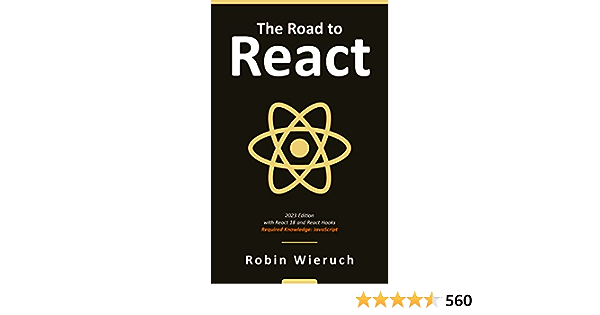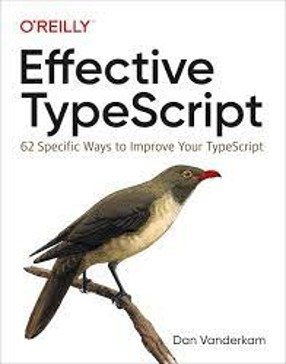The Top 5 Books on Front-End Development
Introduction
Good HTML and CSS are no longer the only tools for front-end development. At least one modern framework is familiar to front-end developers today, such as Vue or React. They frequently use TypeScript and modern JavaScript. As such — it’s getting complicated. Even with the fact that front-end development is within reach, this can be fantastic. You can begin a career in front-end development with a few books, courses, and practice.
Let’s talk about some of the books you might want in your library to help you get ready for a new career in front-end web development in this article.
Why Should You Study Front-End Development?
The following are a few good reasons to study front-end development:
- Demand for front-end web developers is high: Front-end web engineers are extremely popular nowadays. For any business site or application, a front-end designer is required for any application since that matters more.
- A well-paid career option is front-end development: One of the most sought-after professional options among students and working professionals is front-end development. Start learning Front-End Development if you want to expand your career options and income.
- It’s a continually developing field: Front-end web advancement is an interesting profession since it’s continuously developing and continually evolving. This means that you’ll always have the chance to use new tools and learn new skills, which will keep you interested in your career. It is a field with numerous hands-on learning opportunities.
- Gives developers flexibility: You can work from home, anywhere, as a front-end developer. This creates perhaps the most adaptable vocation you can pick.
- It’s all about imagination and creativity: Front-end web advancement is about innovativeness and imaginative critical thinking. As a front-end web developer, you can create individualized websites that provide users with the best possible experience.
The Road to React (2020 Edition)

A. Overview of the book
Respond is the top system for front-end designers. Prepare yourself to be asked a lot of questions about React if you’re looking for a job. The Road to React, by Robin Wieruch, shows you the essentials of reacting in a spotless, realistic, simple way. After sifting through a lot of React books that could not keep their focus, this one has helped me personally.
You won’t need any complicated tools to build a real-world application. In a real-world React application, it explains fundamental ideas, patterns, and best practices. With each chapter, the book includes additional reading material with references. After each chapter, there are numerous exercises. Also, the reader will gain knowledge of how to organize and test their React components within the project. If you want to learn more about building and using React components, this book is a great place to start.
B. After reading the book, you will do
The book utilizes a step-by-step way to deal with investigating the ideas of react and how to involve them in current client applications to control our front end. This topics are covered in the book:
- Fundamentals of React
- React’s Legacy
- Styling in React
- React Maintenance
- Real World React (Advanced)
- Deploying a React Application
JavaScript: The Definitive Guide

A. Overview of the book
JavaScript: The Definitive Guide totally should be referenced. It has been commended and lauded as an exemplary JavaScript book, yet presently it merits getting again in light of the fact that it has a new August 2020 release.
This title is around 700 pages and has the objective of filling in as a total JavaScript reference — ideal for getting a profound understanding of JavaScript for novices, however for middle-of-the-road and high-level coders. This book’s edition was significantly reduced from the previous one, despite its large size. This book has experience for a long time. JavaScript is adored by Readers: The Definitive Guide for its clear, elegant explanations of difficult topics. This book has stood the test of time, now in its 7th edition.
B. After reading the book, you will do
- Introduction to JavaScript, a look at JavaScript, the standard “hello world” and more.
- Lexical design, which incorporates the text of the JavaScript Program, remarks, literals, identifiers and saved words, Unicode, and discretionary semicolons, and that’s only the tip of the iceberg.
- Expression statements, compound and empty statements, conditionals, loops, jumps, various statements, declarations, and other types of statements are all examples of statements.
- Functions include functions as values, functions as namespaces, closures, functional programming, invoking functions, function arguments and parameters, and more.
- Classes, which include classes with the class keyword, classes with prototypes and constructors, classes with methods added to existing classes, subclasses, and more.
- Modules, include node modules, ES6 modules, modules with classes, objects, and closures, and more.
Effective TypeScript

A. Overview of the book
TypeScript is the only way to become a front-end developer in today’s world. It is now a common feature in numerous codebases.
This book’s beauty lies in its opinionated tone, which establishes guidelines and preferences for readers to adhere to throughout. However, in contrast to the other TypeScript books, it does not share any tools with React or Angular. This book is unique since it professes to be your “second book on TypeScript.” Notwithstanding, it is on the rundown since it is excellent and will help all TypeScript students.
Because of its unique value, this TypeScript book can be paired with another TypeScript book on this list. You can improve your TypeScript development skills with the help of this book, which is practical and simple to implement.
B. After reading the book, you will do
- Getting to Know TypeScript, which figuring out TypeScript versus JavaScript, knowing which TypeScript choices you’re utilizing, understanding that cod age is free of typos, becoming familiar with primary composing, and restricting the utilization of any one kind.
- Understanding the differences between TypeScript and JavaScript, the options available in TypeScript, the fact that cod generation is independent of types, becoming accustomed to structural typing, and limiting the use of any one type are all part of Getting to Know TypeScript.
- Type Plan, which incorporates favouring types that generally address substantial states, abstaining from rehashing type data in documentation, pushing invalid qualities to the border of your sorts, and the sky is the limit from there.
- Working with any entails a variety of practices, such as restricting the scope of any type to its smallest possible size, favouring more precise variants of any over plain any, concealing unsafe type assertions, and so forth.
- Writing and Running Your Code, which includes knowing how to iterate over objects, comprehending the DOM hierarchy, preferring ECMAScript features over TypeScript features, and more.
HTML, CSS, and JavaScript All in One

A. Overview of the book
Every front-end developer should read Sams Teach Yourself HTML, CSS, and JavaScript All in One by Jennifer Kyrnin and Julie Meloni. It helps with figuring out how to utilize HTML, CSS, and JavaScript together to configure, make, and keep up with sites. The book has clear, bit-by-bit directions and reasonable, involved guides to direct the fledgling through these three interconnected advances. Exercises and quizzes to test your knowledge and skills are also include.
B. After reading the book, you will do
There are so many lessons in the book. They are well-designed and straightforward to understand. This is the thing that you will learn from these examples:
- Create your own web page and get it online
- Write HTML that’s responsive web design-ready
- Use CSS media queries and breakpoints
- Format text for maximum clarity and readability
- Leverage JavaScript libraries such as jQuery
- Work with transparent images and background graphics
- Design a site for mobile devices
Responsive Web Design with HTML5 and CSS

A. Overview of the book
This book is for you if you need a comprehensive understanding of responsive web designs and how to achieve them! All you need to know is how to use HTML and CSS. Ben Frain explains responsive web design and how important it is to modern web development. Variable textual styles, CSS Parchment Snap, and other ongoing improvements in responsive website composition are analyzed. You can learn about the new CSS Grid layout’s uses and benefits from this book.
B. After reading the book, you will do
- Coordinate CSS media questions into your plans; apply various styles to various gadgets
- Load various arrangements of pictures relying on screen size or goal
- Influence the speed, semantics, and clean markup of open HTML designs
- Carry out SVGs in your plans to give resolution-independent pictures
- Apply the most recent elements of CSS like custom properties, variable textual styles, and CSS Matrix
- Add approval and connection point components like date and variety pickers to HTML structures
- Understand the huge number of ways of upgrading connection point components with channels, shadows, activities
Conclusion
Here at this point, you understand that each Book is totally stacked with the data to learn Front-End Web Progression, you can pick the one regardless as indicate by your prerequisite and solace!
Also Read
The Top 5 Best Books on Java Programming
The Top 5 Best Books on Cloud Computing
5G Technology: Revolutionising Connectivity and Communication
